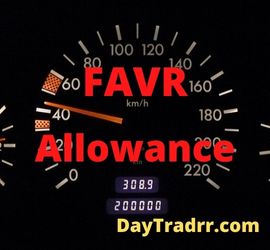What Is a Retention Bonus?
 A retention bonus is a specific payment or reward offered in addition to an employee’s normal compensation. It is given as an incentive to retain a key individual on the job. Often, this occurs during a particularly critical business cycle, such as a merger or acquisition, or during a critical production time. This payment is usually a one-time offering intended to prevent an employee from suddenly quitting their position. Retention incentives have grown in popularity in recent years as corporate poaching escalates.
A retention bonus is a specific payment or reward offered in addition to an employee’s normal compensation. It is given as an incentive to retain a key individual on the job. Often, this occurs during a particularly critical business cycle, such as a merger or acquisition, or during a critical production time. This payment is usually a one-time offering intended to prevent an employee from suddenly quitting their position. Retention incentives have grown in popularity in recent years as corporate poaching escalates.
A retention bonus is also known as a retention package, retention pay, or stay bonus. Generally, it is a one-time lump payment paid to an employee by a company or organization. It is intended to ensure that key employees stay with the firm for a certain period of time. The amount provided as part of a retention incentive package varies. It is often dependent on a percentage of the employee’s income, their job within the firm, and the length of time they will stay. Retention incentives are used by larger firms to keep top personnel and continue to profit from their talent and expertise. During a corporate transition, organizations generally pay retention bonuses to preserve a solid functioning core group. This secures a solid foundation inside the firm and ensures that experienced leadership helps all employees through the transition.
Retention Bonus – A Closer Look
Companies sometimes experience a disruptive phase of organizational transformation. A stay bonus can give financial incentives to top executives and critical staff. The underlying purpose is to urge them to stay with the firm until it becomes stable. The monetary incentive is known as a retention bonus. Oftentimes, a corporation will want to retain its top workers through a merger, restructure, or reorganization. This is to ensure that it has enough experienced individuals working in the company during transitional times. For example, consider a company that is closing down a department or lands a big project. Under these circumstances, it might provide retention incentives to its top performers. This is to guarantee that it has the necessary staff to carry the project or merger through to completion.
Retention Bonus – Economic Influences
In a thriving market, key employees often receive enticing employment overtures from other organizations. The likelihood of a company losing valuable personnel to rivals is significant. The corporate environment changes rapidly and a liquid labor market allows individuals to move from job to job quickly. Retention incentives are a proven strategy for businesses to retain important personnel. It incentivizes employees who learn new skills or complete critical training that is critical to the running of a firm. These are prime candidates for a retention bonus. It is one more layer of assurance that their capabilities are not transferred elsewhere.
Generally, a retention bonus is a one-time payment provided to an employee. Companies typically opt to provide a one-off retention incentive rather than a permanent pay raise. For example, they may lack the budgeted funds to commit to a permanent wage increase. The value of an employee’s retention incentive may vary depending on the company. In many instances, it is connected to the employee’s length of service with the company. Also, the bonus may be handed out at the conclusion of a period, as a percentage of the employee’s existing income, or as a lump sum of money. For example, consider a project that will take 12 months to complete. In that case, the employee retention incentive might be paid after 15 months. This is to guarantee that the employee remains on board for the duration of the project.
Retention Bonus – Tax Treatment
All incentives, including a retention bonus, are considered additional earnings by the IRS. Supplemental wage is simply money received in addition to the employee’s normal pay. Taxes on a retention incentive are typically applied using either the aggregate technique or the percentage method. Bonuses are segregated from the employee’s income and taxed directly at a fixed rate of 22 percent under the percentage approach. If the bonus exceeds $1 million, it will be taxed at a rate of 37%, or the highest income tax rate for that year. For example, if an employee received a $1.2 million retention incentive in 2021, the first $200,000 would be taxed at 37%. The remaining $1 million would be taxed at the standard 22% rate. When the company can withhold tax by combining the retention incentive and the employee’s normal income into a single payment. In this circumstance, the aggregate technique is utilized.
Supplemental Wages
Supplemental wages are wage payments to an employee that aren’t regular wages. They include, but aren’t limited to, bonuses, commissions, overtime pay, payments for accumulated sick leave, severance pay, awards, prizes, back pay, reported tips, retroactive pay increases, and payments for nondeductible moving expenses. However, employers have the option to treat overtime pay and tips as regular wages instead of supplemental wages. Other payments subject to the supplemental wage rules include taxable fringe benefits and expense allowances paid under a nonaccountable plan. How you withhold taxes on supplemental wages depends on whether the supplemental payment is identified as a separate payment from regular wages. (Source: irs.gov)
Retention Bonus Contracts
When an employee agrees to stay for a set length of time in exchange for a retention incentive, then what? Typically, the employer will require that the employee sign a contract acknowledging their agreement to the conditions. A retention bonus agreement is a contract used to provide an incentive for a specific time period or event. For example, during a merger or acquisition. In summary, it provides an incentive in the form of a one-time or two-time payment provided to key employees. This is in exchange for their continuing to work at the business for a set period of time or critical event. Simply put, that’s all there is to it. Consider a retention bonus agreement to be the opposite of a severance agreement. Unlike a severance agreement, which provides reimbursement if the employee feels they were terminated properly, a retention incentive agreement pays them to stay.
Frequently Asked Questions
What types of jobs offer a retention bonus?
Almost any type of organization may provide a retention incentive. However, they are more typical in major corporations than in small enterprises, where they are uncommon. According to a World at Work poll, this sort of program is most common in firms with more than 20,000 workers. Incentive programs are least common in organizations with less than 100 employees.
How much is an average retention bonus?
A retention bonus package varies from firm to firm. However, it is often based on a percentage of the employee’s income. Other factors include the employee’s function in the firm and the length of time they have been with the company. The size of the retention bonus is also influenced by numerous criteria, including the rationale for the retention incentive, the wages of rivals, and the company’s finances. The usual retention incentive is between 10-15% of an employee’s base income, although it can go up to 25% or more.
Does the Military offer a retention bonus?
The United States Military gives a Selective Retention Bonus to encourage soldiers to reenlist and stay in the military. The current maximum incentive for four-year reenlistment is $25,000 each year. There is a maximum total of two reenlistments. Higher retention bonuses are typically given to roles that are difficult to fill.
Up Next: FAVR: What Is a Fixed and Variable Rate Allowance?
 A FAVR plan reimburses employees using their own car for business purposes with a combination of a monthly allowance and mileage reimbursement. The fixed and variable rate reimbursement is a method of compensating workers who use their personal or leased automobiles for work-related purposes. According to Internal Revenue Service (IRS) requirements, FAVR payments must be provided at least quarterly for tax qualification. The IRS also imposes certain limits on how and how much an employee’s car must be utilized to qualify for the FAVR allowance.
A FAVR plan reimburses employees using their own car for business purposes with a combination of a monthly allowance and mileage reimbursement. The fixed and variable rate reimbursement is a method of compensating workers who use their personal or leased automobiles for work-related purposes. According to Internal Revenue Service (IRS) requirements, FAVR payments must be provided at least quarterly for tax qualification. The IRS also imposes certain limits on how and how much an employee’s car must be utilized to qualify for the FAVR allowance.
When determining the employee’s reimbursement, a FAVR car allowance considers both fixed, localized costs as well as variable costs. For example, fixed costs would include expenses like insurance, depreciation, and registration. Variable costs would include gas, oil, and maintenance.




